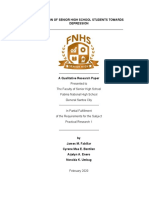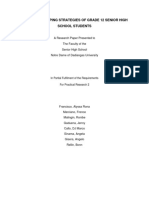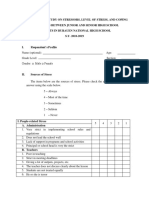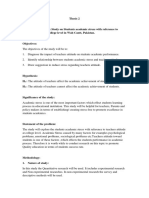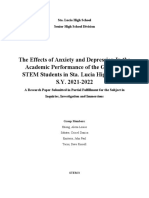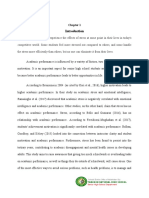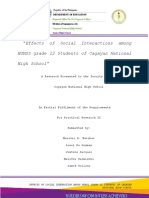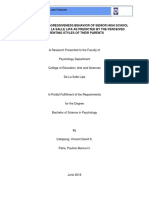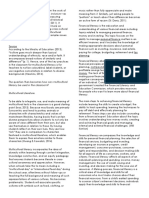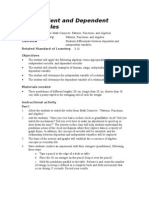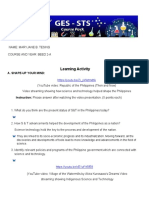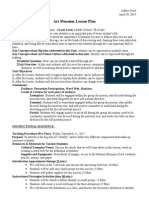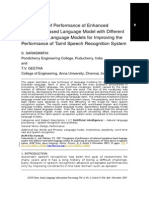0% found this document useful (0 votes)
1K views18 pagesPerception of Senior High School Students Towards Depression
The document summarizes a study on senior high school students' perceptions of depression. It provides background on the prevalence of depression among students and discusses the study's purpose, which was to understand students' views of depression and identify how it impacts their academic and social lives. The study involved surveying 20 senior high school students on their perceptions of depression.
Uploaded by
Arjelyn EneroCopyright
© © All Rights Reserved
We take content rights seriously. If you suspect this is your content, claim it here.
Available Formats
Download as DOCX, PDF, TXT or read online on Scribd
0% found this document useful (0 votes)
1K views18 pagesPerception of Senior High School Students Towards Depression
The document summarizes a study on senior high school students' perceptions of depression. It provides background on the prevalence of depression among students and discusses the study's purpose, which was to understand students' views of depression and identify how it impacts their academic and social lives. The study involved surveying 20 senior high school students on their perceptions of depression.
Uploaded by
Arjelyn EneroCopyright
© © All Rights Reserved
We take content rights seriously. If you suspect this is your content, claim it here.
Available Formats
Download as DOCX, PDF, TXT or read online on Scribd
/ 18
